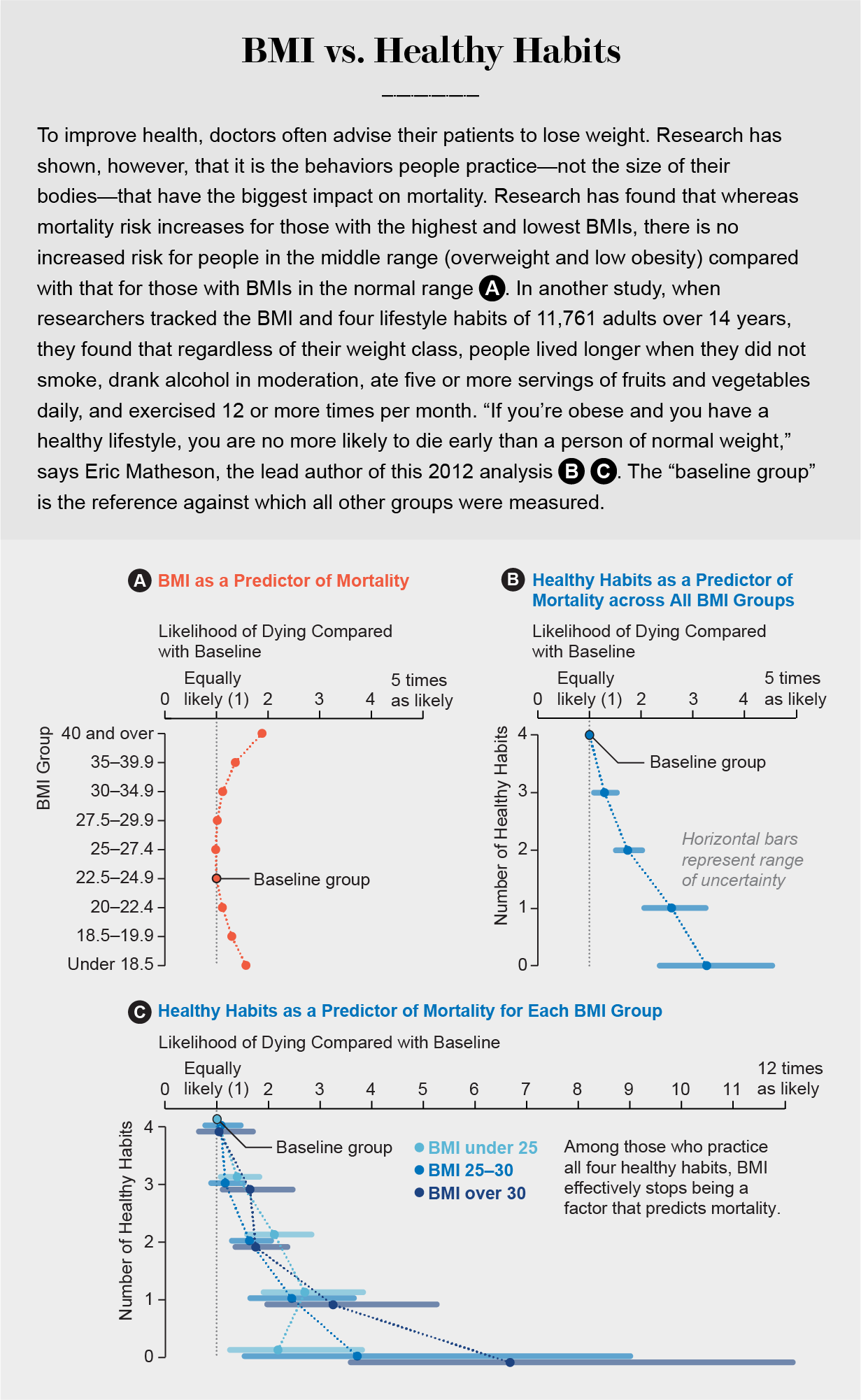That should get Rule’s attention.
Have you seen this work, published in Lancet a couple of years ago?
https://www.sciencedirect.com/science/article/pii/S2213858718302882
“Association of BMI with overall and cause-specific mortality: a population-based cohort study of 3·6 million adults in the UK”
Some bits picked out of the Summary:
BMI had a J-shaped association with overall mortality
Associations between BMI and mortality were stronger at younger ages than at older ages, and the BMI associated with lowest mortality risk was higher in older individuals than in younger individuals (That one is interesting)
BMI had J-shaped associations with overall mortality and most specific causes of death; for mental and behavioural, neurological, and external causes, lower BMI was associated with increased mortality risk.
It’s a long and involved paper, but interesting. I became aware of it from an article in the July Scientific American about a clinic where the doctor does not use scales.
https://www.scientificamerican.com/article/what-if-doctors-stopped-prescribing-weight-loss/
I thought it was a pay paper, but I just managed to get in. I don’t think I’ve invoked my subscription rights, I think I’ve only subscribed for paper. See if you can open it.


